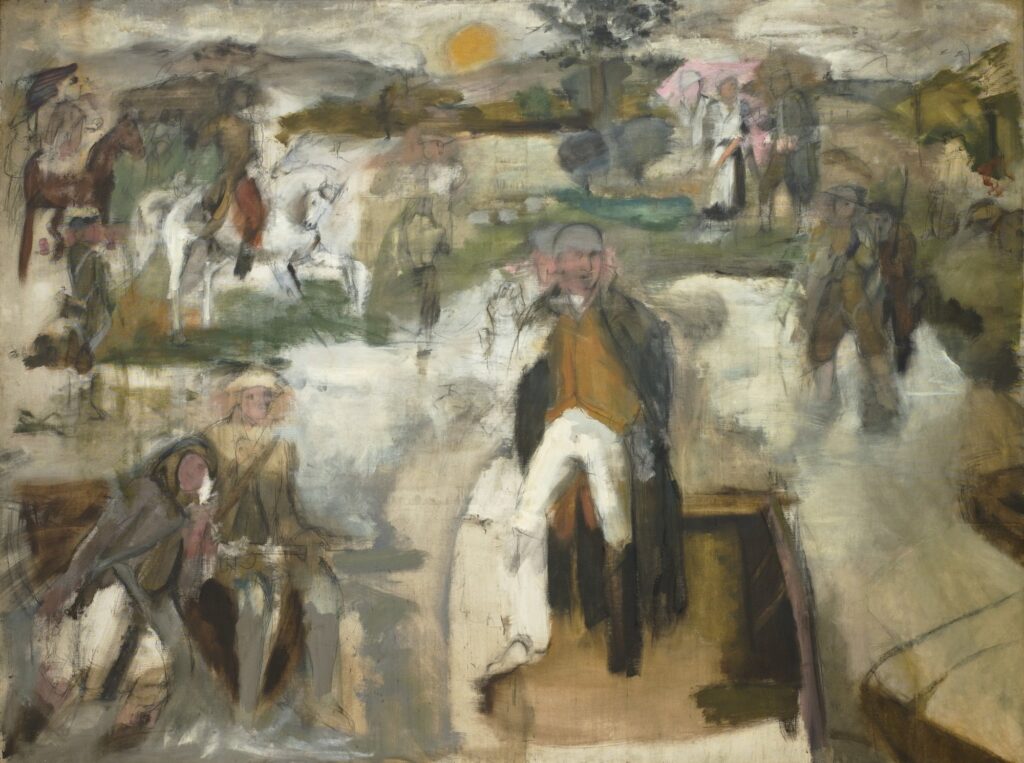To continue developing requires both honoring tradition and innovating new approaches. See the study sheet here. Watch the recording here.

There’s history, there’s mythology, and there’s artistic re-imagining of mythic history. Each of those serves a purpose: to ground us in the context of a tradition; to make meaning of that tradition endure across generations; to recast that tradition in a new telling. Each one of them bears a truth.
Solomon Rabinovich was a real person. He was born in the real shtetl of Voronkov, in the Ukraine. Witnessing the growing destruction of shtetl life under the oppressive rule of Czar Alexander III, Rabinovich decided it was important to tell the story of that world. He did so under the name Shalom Aleichem. To paint a picture of a disappearing world Shalom Aleichem created a fictional shtetl, Anatevka.
The main character in Aleichem’s stories is Tevye the milkman, a simple good-hearted man who does all he can to protect his family and his village from the impending onslaught of a changing and dangerous world. The world that was Anatevka was ultimately destroyed. But its story lived on.
Half a century after Aleichem published his tales Joseph Stein, Jerry Block and Sheldon Harrick restored the world of Anatevka in the musical Fiddler on the Roof. The opening song, “Tradition,” establishes the theme of the play. Tevye sings with certainty, “Without tradition, our lives would be as shaky as a fiddler on the roof!” Yet, Tevye cannot even wall off his own family, much less his village, from challenges to tradition. In escalating measures, each of his three daughters, Tzeitel, Hodel and Chava, test Tevye in how far he will concede lines of tradition out of love for his daughters. To dance upon the edge of daily life while playing the fiddle of tradition is a great skill indeed, Tevye shows us.
Yitzroch Loiza Grossberg was also a real person, born in the Bronx in 1923. He started playing the saxophone at an early age. By 18 he was playing professionally and had changed his name to Larry Rivers. He became a painter. His first major work was a recasting of Emanuel Leutze’s Washington Crossing the Delaware. Leutze painted Washington in an improbably heroic pose, thus mythologizing an actual historical event. Rivers deconstructed and blurred the ideal of the event.
Yet, it was in a way, an act of honoring Leutze’s intent. The dominant art movement in mid-twentieth century America was Abstract Expressionism, a form that was contemptuous of representational art. With his piece Rivers managed to poke fun at those artists by reasserting to honored place the human figure. He also paid homage to those same painters by using diluted pigments, a prominent technique of theirs. With one painting, Rivers managed to simultaneously break from and honor both Academic painters such as Leutze and modernists such as Mark Rothko.
Parshat Bechukotai is the final portion in the Book of Leviticus. It is a book that on its surface seems to be absent of story and full of rules about archaic rituals. Yet, here in this particular portion a single verse hints at the book’s radical nature: “you shall eat old grain, and you shall clear out the old to make room for the new” (Leviticus 26:10). As the Israelites are about to set back on their journey to the land of promise, they learn that both tradition and new growth are essential to a life of purpose and fulfillment.
Tevye dances, balancing what is everlasting with what must ever come anew into existence. And Larry Rivers in 1984 plays the jazz saxophone, in its language of improvisation and innovation, at the Jewish Museum at the opening exhibit of his painting “The History of Matzah: The Story of the Jews.” The lesson of Leviticus turns out to be not the simplicity of passive obedience but the complexity of creative responsibility.
Join us here at 7:00 p.m. (PDT) Thursday May 26 as we explore crossing the river.








